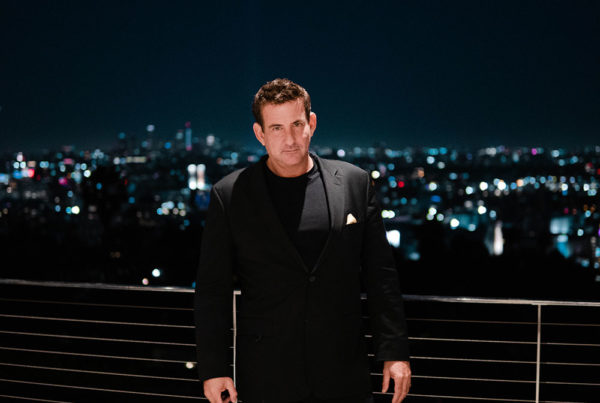“Every good thing in the world stands on the razor edge of danger.”
– Thornton Wilder
The information and technology industries have been truly revolutionized over the last 50 years. Within the scope of half a century, the global economy has transitioned into a hyperlinked electronic world through which an individual can log onto the internet and instantly access an infinite amount of information. Those belonging to the Millennial generation are interlinked and connected with the world around them more than any other generation in the past. The advent of the internet and the entire universe of products and services associated with it – smartphones, tablets, WiFi, Skype, and the rest – have enabled people to be instantly and constantly connected to the world around them. We now have an almost infinite ocean of knowledge at the tips of our fingers thanks to modern technology. This gives us the ability to conduct research at a speed that has never before been seen in human history. It also gives us the ability to access constantly-updated information that is endlessly transforming with each passing day, so that there is no “gap” or disconnect between outdated information and information that is current and pertinent.
With this dawning of a new era and all the benefits associated with it, there is also an extremely dark side as well. According to the cybersecurityventures.com Cyber Security Market Report:
- Worldwide cybersecurity market grew from $3.5 billion in 2004 to $75 billion in 2015.
- The global cybersecurity market has grown approximately 35 times over the past 13 years. It is predicted to continue growing over the time to come and reach a staggering $170 billion by 2020.
- The United States increased its spending on cybersecurity from $14 billion in 2016 to $19 billion in 2017, which is over 35% growth in just one year!
EVIDENCE
- Cybersecurity has become one of the most compelling global issues in the 21st century. In recent months, Equifax – one of the largest credit bureaus on earth – was subject to a malicious cyberattack, causing customers to be rerouted to a fake Equifax website (set up by hackers) that was created with the purpose of stealing sensitive client data and private information. In 2016, com reported that it had been the subject of the largest data breach in history – during which hackers impacted 1.5 billion user accounts to steal names, addresses, dates of birth, telephone numbers, and other sensitive information. In 2014, eBay – one of the largest internet-based commerce (or “ecommerce”) companies on earth – disclosed that all of its 145 million users had been exposed to a malicious cyberattack with the goal of stealing private user information. In 2008, Heartland Payment Systems suffered a cyberattack that exposed 134 million credit cards to malicious “spyware” that hackers utilized to infect Heartland’s data systems.
PROBLEM
- Across the globe, people and companies use the internet to communicate with each other and to store sensitive data, which can include financial records, credit card information, business information, source code, trade secrets and other IP, client information, health information, business plans, and other sensitive personal (or company) information. For any modern company, having privileged network access to sensitive client information makes a company a more attractive target for attacks by cyber attackers or other data thieves. A breach of network security and systems or other events that cause the loss or public disclosure of, or access by third parties to, clients’ stored files, networks, systems or data can have serious negative consequences for any business, including possible fines, penalties and damages, reduced demand for that company’s offered solutions, an unwillingness by that company’s clients to use those solutions, harm to company brand and reputation, and time-consuming and expensive litigation. Even more problematic, large companies are frequently targeted by tailor-made cyberattacks specifically designed to interrupt their business or harm their reputation. The techniques used to obtain unauthorized access, disable or degrade service, or sabotage systems change frequently, often are not recognized until launched against a target, are designed to avoid detection and remain hidden, and may originate from less regulated or remote areas around the world.
RESULT
- As a result, companies may be unable to prevent these techniques, detect and contain a compromise of their systems and networks in a timely manner, implement adequate measures, or enforce the laws and regulations that govern such activities. Furthermore, cyber attackers may launch attacks intended solely to disrupt a company’s daily ongoing business, commonly known as “denial of service” attacks. Such attacks can and do catastrophically impair a company’s ability to operate its business, including the ability to provide maintenance and support services to its clients.
- Keep your antivirus and firewall software updated and current, and perform a diagnostic scan of your computer (an option available with almost any computer security software) at least once a week. Pay close attention to website addresses to make sure they are spelled correctly and match up with a verified company website – malicious websites frequently utilize the misspelling of a company name or a different domain ending (for example, .net instead of .com) to deliver unsuspecting computer users to malicious websites.
For companies, one of the most important protective steps against cyberattacks is to encrypt sensitive data – also known as securely encoding sensitive information so that it can only be viewed or accessed by authorized parties. From credit card digits to social security numbers, modern hackers frequently look for standard information that has not been encrypted for protection. For companies holding such sensitive data, protect against cyberattack by utilizing strong encryption tools (there are many excellent security-focused encryption software programs available to the public for purchase, or even for free.)
Companies should also ensure that their physical hardware is secure. Office computers, printers, fax machines, and all other technology-based devises should be kept in secure physical locales and locked up at the end of the day when not in use. On a larger scale, companies should take proactive efforts to embrace cybersecurity as part of company culture. The leader of a company can’t be the only one taking measures to keep the company’s and customers’ information safe. Employees must also be educated on the ways that they personally can help to protect the company’s sensitive information against cyberattack. From having a standard “internet policy” for employees that defines which websites employees are authorized to use while at work (and which they aren’t) to conducting large cybersecurity-focused employee seminars designed to teach and educate employees on modern data protection, a leader should take positive steps to ensure that employees are both knowledgeable about how to keep information safe while also being aware and alert for potential signs of cyberattack or data intrusion.
By staying on the cusp of technology, constantly researching into computer security solutions for both your personal life and your industry or business, and familiarizing yourself with the methods that can be used to protect against cyberattacks, you will empower yourself to be a leader within your industry and drive your personal and business successes to ever greater heights. Finally, identify what companies are IT oriented that continually focus on betterment with a major initiative. For example, Konica Minolta acquired All Covered IT years ago, Jan 6, 2011 – According to a prepared statement: “The All Covered acquisition will build upon Konica Minolta’s current Managed IT Services offerings and allow Konica Minolta to extend the reach of solutions and services it can offer its customers.” This was a great move to stay ahead of the technology swing to put a massive defense and offense to this now important customer need. Prepare, assess, and plan because a castle is only protected by the people that support it.
– Tim S. Marshall, Author of “The Power of Breaking Fear”
Click Here to Download “The Power of Breaking Fear” audiobook!
Some reviews of “The Power of Breaking Fear”:
“The Power of Breaking Fear”
“Tim S. Marshall has gone out of his way to arm his readers with a seemingly endless number of vitality strategies that are easy to incorporate into one’s daily life. The Power of Breaking Fear belongs on every bookshelf.”
– U.S Review
•••
– Independent Press Award (IPA)
“The Power of Breaking Fear” winner for Best Audio and book Content!
•••
“The Power of Breaking Fear” is a must-read for anyone who is frustrated in life, and wants to achieve true long-lasting success and happiness.”
-Paul Noble, 5-Time Emmy Award Winner
•••
“The Power of Breaking Fear” is one of the most fascinating books I have seen. A fresh new look to end the fears that hold us back from true success.”
– Kenneth Blanchard, #1 Best-Selling Author of The One Minute Manager, 13-million copies sold.



